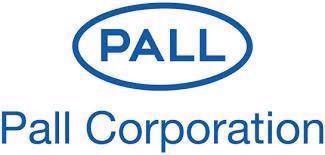Both ‘Cocktail culture’ and craft whiskey have been surging in popularity as today’s consumers increasingly seek out drinks that blend 'innovation with premium products.'

Image Credit: L.O.N Dslr Camera/Shutterstock.com
There is an expected compound annual growth rate (CAGR) of 6.4% for the overall global whiskey market size over the next five years, according to Grandview Research. Consumers changing preferences and increasing disposable income are driving this growth. Is your business prepared to create high-quality whiskey at the rate of consumer demand?
For example, a clear, glossy appearance and a distinct flavor is what whiskey, in particular, is known for. If your whiskey is cloudy, it alters consumer perception of your product. However, whiskey can appear cloudy in for certain reasons.
What is Chill Haze?
Whiskey is a spirit that is particularly fragile. The solubility of turbidity-inducing substances is influenced by the spirit’s alcohol and water levels.
If a whiskey is cooled, some compounds like fatty acids and esters stick together. The spirit’s hazy or cloudy appearance is caused by the small particles that are formed. ‘Chill haze’ is the name for this phenomenon.
Even though chill haze does not impact flavor, taste or overall product safety, consumers still expect a visually clear drink. So chill haze could can deter a consumer from purchasing the product again.
This means it is important for whiskey producers to remove chill haze in order to maintain product quality and remain competitive.

Image Credit: alexkich/Shutterstock.com
What are the Challenges with Traditional Chill Haze Removal?
Whiskey producers normally remove chill haze by using a heat exchanger for chilling followed by filtration. Depending on the distillery's size and the required flow rate, the heat exchanger can be one of the most expensive parts of the process because of the cost of purchase, maintenance and running.
The cause of chill haze, long-chain fatty esters, can be created by lowering the spirit temperatures between 28.4°F (-2°C) and 39.2°F (+4°C) before bottling. Long-chain fatty esters can do more than cause chill haze; they also can leave unwanted tastes. This is different from short-chain fatty esters, which are where the taste and flavor of whiskey come from.
By leveraging depth filter sheet-based media, it is possible to keep short-chain fatty esters while absorbing long-chain fatty esters. However, some short-chain fatty esters will also be removed in this process. The removal of these essential flavor compounds is a problem because whiskey producers do not want to deliver a clear product by compromising flavor.
Process Improvement: Whiskey Distillery Case Study
Working with a leading Scottish distillery, Pall was able to eliminate increased turbidity, which was out of specification for the processes. A 0.5% reduction in availability of the whiskey production process was revealed through monitoring downtime caused by turbidity. It was shown, after careful analysis, that one of the causes of the turbidity was the existing mechanical process.
Pall SUPRApak™ L Series modules were used to monitor the impact of un-chilled whiskey by the distiller, with support from Pall. The modules feature unique flow configuration and design, and have a completely new filter sheet material configuration.
Previous modules used flat sheet filtration, which has fluid traveling perpendicular to the s sheet's surface; in Pall SUPRApak modules, the fluid travels through the sheet parallel to the sheet surface. This is called ‘edge flow.
The innovative flow pattern enhances the removal of chill haze colloids substances that cause haze, as well as maximizing the sheet media’s adsorptive filtration capability.
How is Filtration at Ambient Temperatures with SUPRApak Modules More Effective?
Adsorption is the major mechanism driving distilled spirits removal of chill haze using sheet media. Unlike surface filtration, contaminants are retained through the sheet media's thickness during adsorption.
The contact time of the filter media with the haze colloids highly influences adsorption. Depending on the type used in the process, classical sheets used for chill filtration have a thickness of 3.5 – 4.5 mm.
Spirits are pumped through filter sheets, causing them to pass the thickness of the given sheet from the filter press’s un-filtrate to filtrate side. They then exit the filter.
‘Edge flow’ technology has the distilled spirit making multiple passes through the depth filter sheets, in a process similar to using a series of multiple flat sheet filter presses.
The turbidity of the bottling vat whiskey was considerably improved when a non-chill filtration process leveraged SUPRApak SH modules. This also meant it was possible to eliminate the expensive chilling process.
Using SUPRApak modules created overall improvements in production and increased throughput for the distillery. In addition, it reduced production costs throughout the process and reduced the risk of contamination with an easier blow-out procedure, lower hold-up volume, improved availability of the filtration process and no drip loss.

Image Credit: GolubSergei/Shutterstock.com
Conclusion: See Through the Haze
It does not need to be challenging to achieve cloud-free whiskey. Making some changes to your filtration process can improve performance.
A good place to start is leveraging SUPRA modules and other technologies to reduce cost and improve quality. This results in crystal-clear whiskey that consumers crave.

This information has been sourced, reviewed and adapted from materials provided by Pall Corporation.
For more information on this source, please visit Pall Corporation.